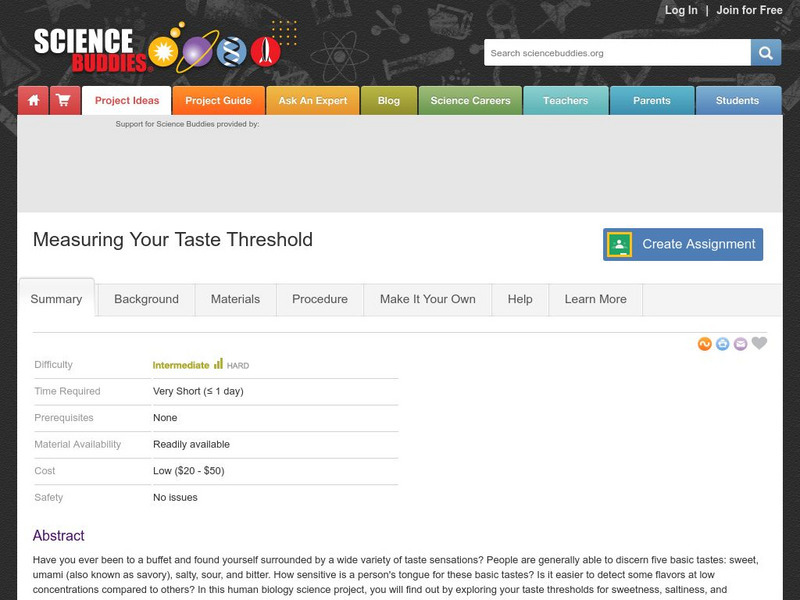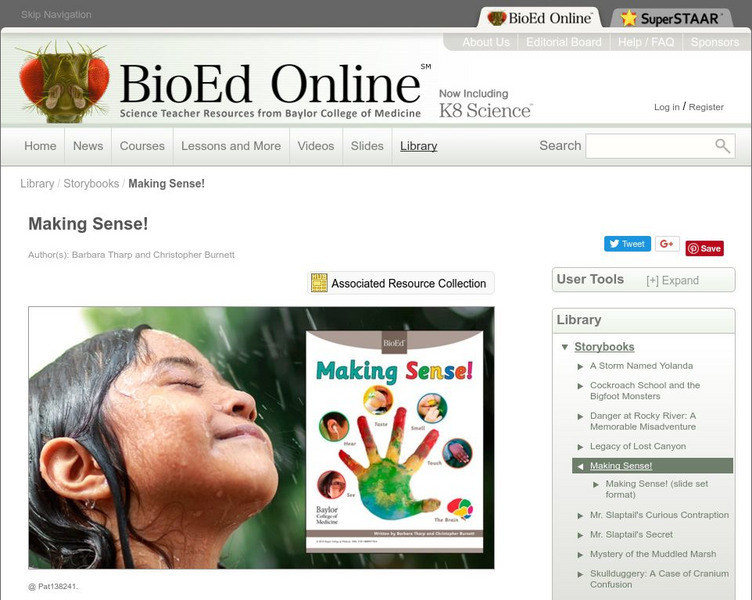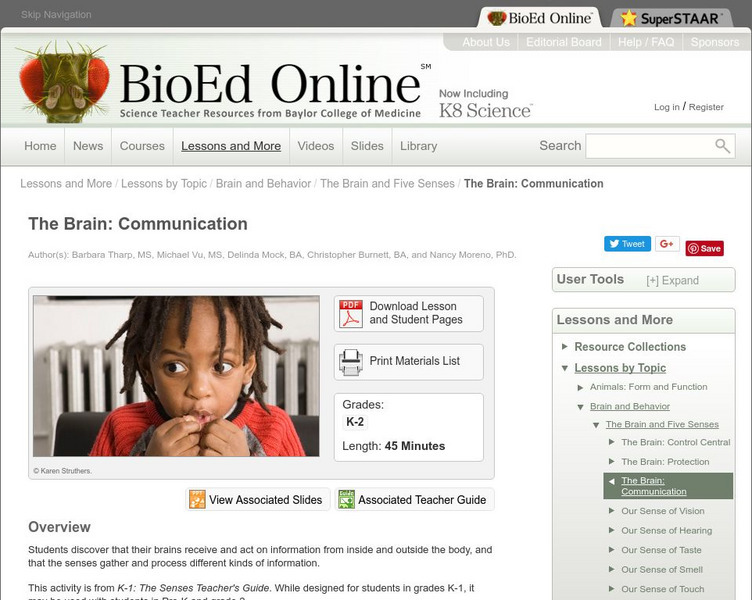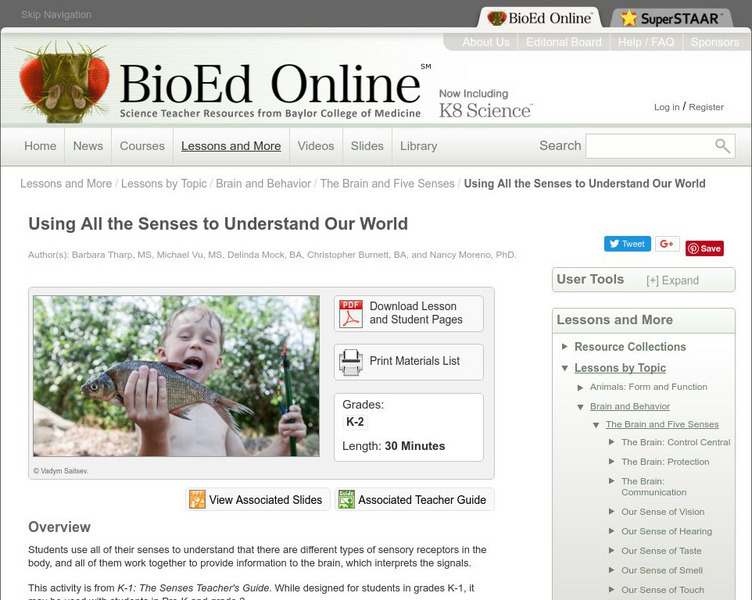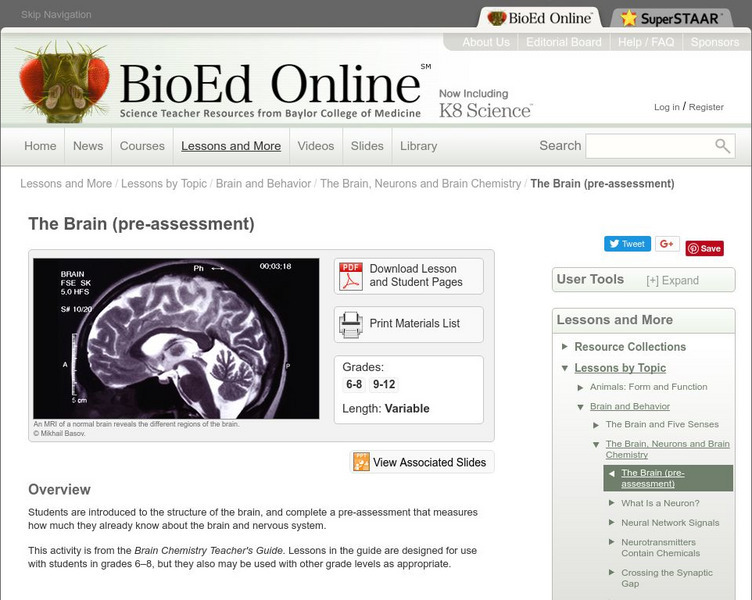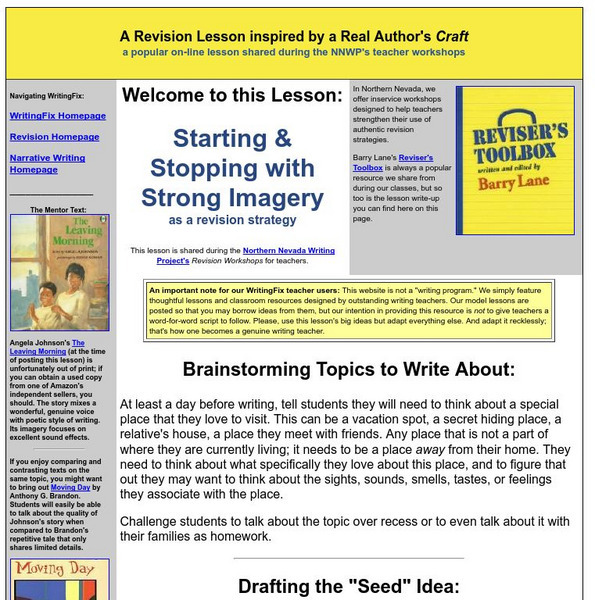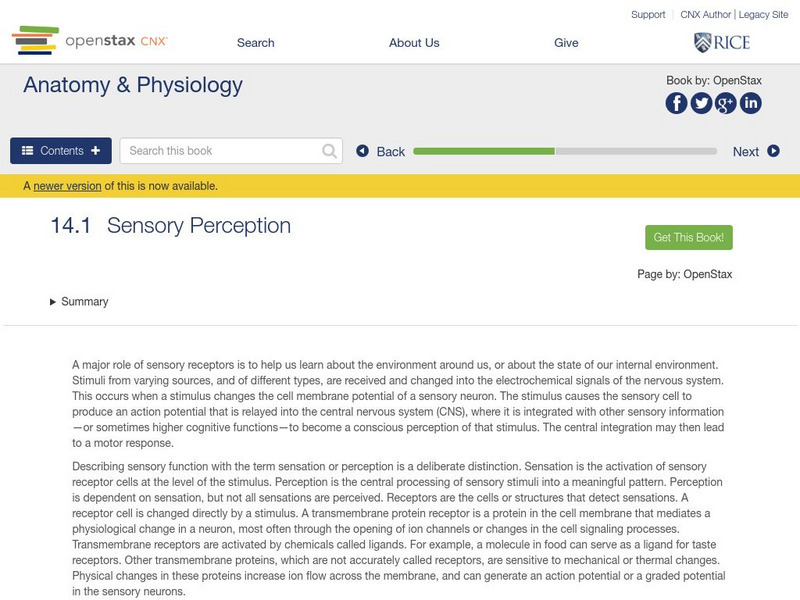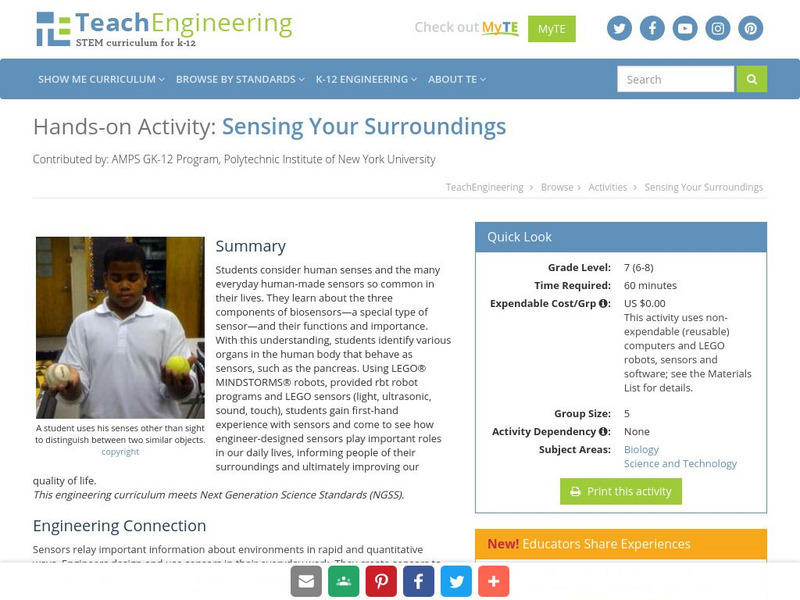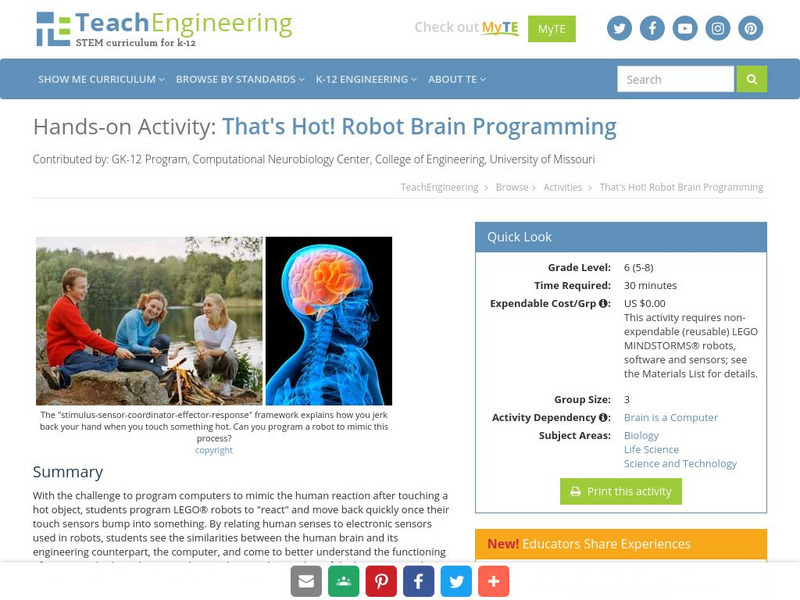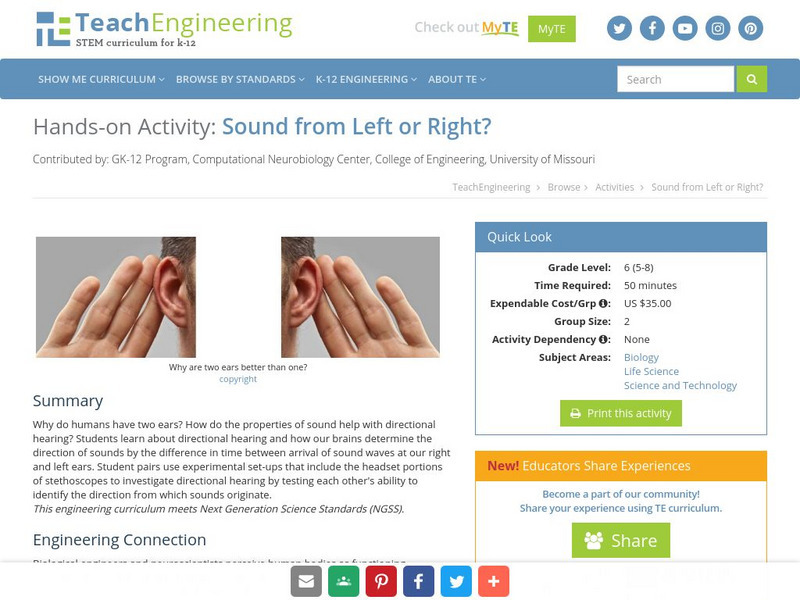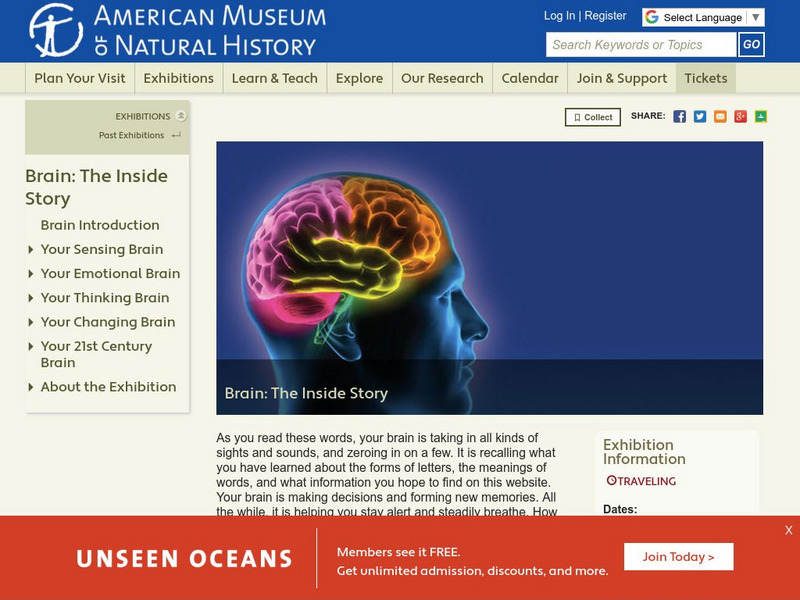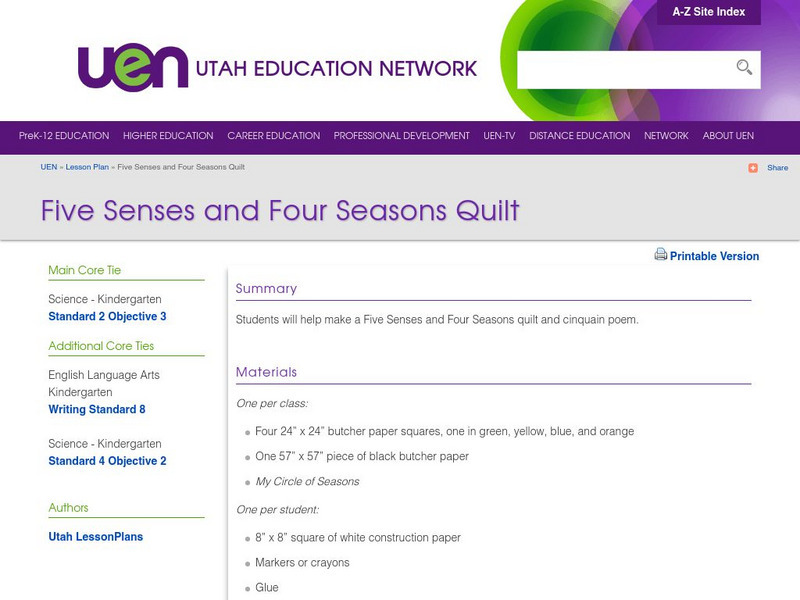Science Buddies
Science Buddies: The Nose Knows Smell but How About Taste?
As if sniffles and clogged sinuses are bad enough, everything seems to taste bland and flavorless when we are sick. Gather up a few volunteers, hit the kitchen, and try this experiment to find out if there is really truth to the idea...
Science Buddies
Science Buddies: Measuring Your Taste Threshold
Some people are more susceptible to flavors than others. This experiment asks you to test your threshold for the three types of taste our tongues are capable of experiencing: salty, sweet, and sour.
Estrella Mountain Community College
Estrella Mountain Community College: The Nervous System
This online biology book chapter offers definitions and descriptions of the nervous system's components.
BioEd Online
Bio Ed Online: The Senses
In the following activities students can learn about the basic characteristics and structures of the brain, skull and sensory system; investigate sight, hearing, smell, taste and touch; and discover how the brain and the senses are...
BioEd Online
Bio Ed Online: Making Sense!
Making Sense! is a colorful, engaging picture/storybook book that introduces students to the brain and the five senses as they solve mystery picture puzzles. Download the text or watch it in slideshow format.
BioEd Online
Bio Ed Online: The Brain: Communication
How does information from different parts of the body reach the brain? In this lesson students discover that their brains receive and act on information from inside and outside the body, and that the senses gather and process different...
BioEd Online
Bio Ed Online: Using All Our Sources to Understand Our World
How do we use our senses to understand our surroundings? What types of input are provided by the different senses? In this lesson young scholars use all of their senses to understand that there are different types of sensory receptors in...
BioEd Online
Bio Ed Online: The Brain: Pre Assessment
The brain has unique physical characteristics and it is specialized into many different areas, each with a different job. Brain functions and abilities develop over time. Assess student's knowledge of the structure of the brain by having...
Other
All Psych: Chapter 5: Section 3: Perception
Through studying the sensory system this article will help learners evaluate the power of perception through visual sensation.
Daily Teaching Tools
Daily Teaching Tools: Additional Webs
This Daily Teaching Tools resource provides a series of graphic organizers. Students will be able to plan the writing of summaries, paragraphs, and literary responses.
Writing Fix
Writing Fix: Starting & Stopping With Strong Imagery: Revision Strategy
In this lesson plan, students will engage in revising their writings to incorporate sensory images. Students will brainstorm topics of places, away from their home, that are special. Then students will choose and then write a descriptive...
CK-12 Foundation
Ck 12: Senses
[Free Registration/Login may be required to access all resource tools.] The following online tutorial explains how sensory stimuli are perceived and interpreted.
Georgia Department of Education
Ga Virtual Learning: Anatomy and Physiology: Senses
Through informational text with printable notes, animations, video clips, and practice problems students discover the function of the sensory structures in the human body.
OpenStax
Open Stax: Anatomy & Physiology: Sensory Perception
Learn the different types of sensory receptors, and describe the structures responsible for the special senses of taste, smell, hearing, balance, and vision.
TeachEngineering
Teach Engineering: Sensing Your Surroundings
Students learn about the components and functions of biosensors. Using LEGO MINDSTORMS NXT robots and sensors, they discover how engineer-designed sensors play important roles in our daily lives, informing people of their surroundings...
TeachEngineering
Teach Engineering: That's Hot! Robot Brain Programming
With the challenge to program computers to mimic the human reaction after touching a hot object, students program LEGO robots to "react" and move back quickly once their touch sensors bump into something. By relating human senses to...
TeachEngineering
Teach Engineering: Commanding a Robot Using Sound
Students continue their exploration of the human senses and their engineering counterparts, focusing on the auditory sense. Working in small groups, students design, create and run programs to control the motion of LEGO TaskBots. By...
TeachEngineering
Teach Engineering: Hearing: How Do Our Ears Work?
Students learn about the anatomy of the ear and how the ears work as a sound sensor. Ear anatomy parts and structures are explained in detail, as well as how sound is transmitted mechanically and then electrically through them to the...
TeachEngineering
Teach Engineering: Sound From Left or Right?
Why do humans have two ears? How do the properties of sound help with directional hearing? Students learn about directional hearing and how our brains determine the direction of sounds by the difference in time between arrival of sound...
TeachEngineering
Teach Engineering: How Do Sensors Work?
Through six lesson/activity sets, students learn about the functioning of sensors, both human and robotic
TeachEngineering
Teach Engineering: Human and Robot Sensors
Young scholars are provided with a rigorous background in human "sensors" (including information on the main five senses, sensor anatomies, and nervous system process) and their engineering equivalents, setting the stage for three...
TeachEngineering
Teach Engineering: What Is a Sensor?
Students gain a rigorous background in the primary human sensors, as preparation for comparing them to some electronic equivalents in the associated activity.
American Museum of Natural History
American Museum of Natural History: Brain: The Inside Story
This exhibition documents how our brains sense, think, process emotions, and grow and change.
Utah Education Network
Uen: Five Senses and Four Seasons Quilt
This lesson engages students in liistening to Gerda Muller's book, My Circle of Seasons. Students will investigate how the five seasons will help them learn aobut the five seasons. Students will write individual cinquain poems and then...



